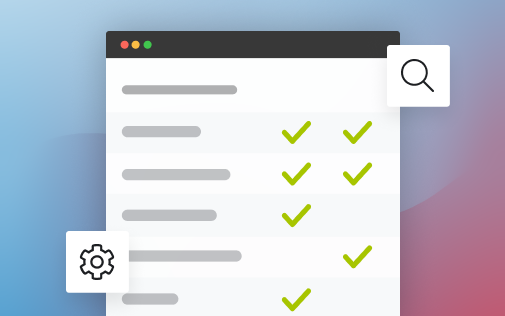Definition of applicant management
Applicant management focuses on the administration of dossiers, communication with candidates and internal consultation. However, applicant management also has an influence on the entire recruiting process and is often equated with the term “(e-)recruiting”. The following article focuses on the topic of e-recruitment and in particular the recruitment channels: E-recruitment: definition and use
Objectives of applicant management
Good applicant management makes the recruiting process as lean as possible while maintaining high quality. On the one hand, a holistic overview of all dossiers helps. On the other hand, fast and individual communication with candidates is key. The aim is to find the best employees for the open position quickly and effectively.
Optimize your applicant management with Dualoo - for smooth recruitment.
Areas of applicant management
Applicant management has an impact on the following areas, among others:
Application receipt
Application receipt should be as easy as possible for both sides.
On the one hand, the company should receive all relevant data from the applicant. If possible, this should be received in a structured and centralized manner (e.g. via the application form of an applicant management tool).
On the other hand, candidates want their application to be as simple as possible. Therefore, make sure that the application option on your homepage is easy to understand and as simple as possible with as few mandatory fields as possible.
Automatic confirmations of receipt are helpful for both sides. The applicant receives immediate confirmation of the application and you as the employer do not have to manually formulate a confirmation.
And how do you deal with unsolicited applications? Perhaps it is worth creating a clear and uncomplicated option for this too.
Dossier management and dossier comparison
When managing dossiers, it helps to have an overview of all candidates so that you don’t lose track. This is often mapped in an Excel file or in e-recruitment software. In addition to the candidate information, this overview should also show the current status of the application and any ratings/feedback from HR and line management at a glance.
A talent pool is suitable for keeping exciting candidates for a suitable job at a later date. It is important to obtain the applicant’s permission to keep their documents.
Get to know the candidates
Every company has its own requirements for the selection process. Whether classic interviews, assessments, trial days or formats such as video interviews and personality assessments – design the individual steps so that you can identify the right talent for your company.
Would you like to know how you can optimize your application process? In our further article on the application process, you will find possible process steps and helpful tips.
Communication with candidates
Communication with applicants should be as simple, standardized and individual as possible. Mail templates that can be adapted as required help here. In addition, applicant management tools work with placeholders, which means that variable information about the applicant and the job is also transferred directly (e.g. Dear Mr. Doe).
Internal consultation & rating
Internal agreements and obtaining feedback from superiors have a major impact on the time to hire and ultimately also on the candidate experience. The longer it takes to receive feedback, the longer the recruiting process takes and – perhaps even more importantly – the longer the applicant waits for feedback.
To make this step as easy as possible, predefined rating sheets are a good idea. This also makes it easier to compare candidates. You will find three free templates to download here: Evaluation form for application receipts, job interviews and trial apprenticeships.
Do I need applicant management software?
Many of the points mentioned above can be implemented with a well-structured Excel, mail templates and a simple application option on the website.
Applicant management software also offers you other advantages:
- Central filing without manual entry
With applicant management software, you receive all dossiers centrally in the software and can easily filter, sort and compare them. This saves you having to create and maintain an Excel list. - Application form on website and all tender channels
The application form can be linked not only on the homepage, but also on all channels used. This means that all applicants are received centrally in one place, regardless of the channel through which they were submitted. - Communicate with candidates using templates and placeholders
With applicant management software, you can store your mail templates and simply trigger them directly from the tool. Thanks to placeholders, the existing data is replaced directly (e.g. in the salutation) - Internal consultation with evaluation form and reminder function
Invite your line manager to provide feedback with just a few clicks and simply trigger a reminder if required. - Recruit in compliance with data protection
Specialized e-recruitment software enables you to easily comply with data protection.
Use our free requirements catalog to compare applicant management tools and find the best solution for your company.
Questions & Answers: Applicant management
What is applicant management?
Applicant management covers all processes for managing and processing applications, from receipt to settings.
Why is an applicant management tool useful?
An applicant management tool automates time-consuming processes, creates transparency and improves collaboration within the team. It saves resources, promotes a positive candidate experience and makes it easier to select the best talent.
What steps are involved in applicant management?
Applicant management includes application receipt, dossier management, communication with candidates and internal coordination between HR and the specialist departments.
How does an applicant management system contribute to improving the candidate experience?
Automated confirmations, quick feedback and transparent processes improve communication with applicants and thus their application experience.




